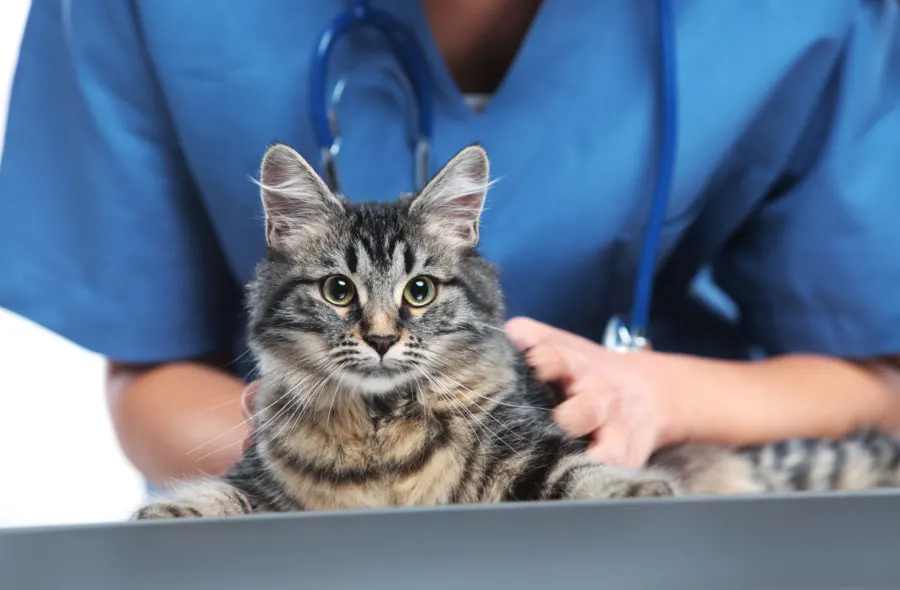When your cat is injured, you need to get him to the veterinarian not just quickly but also safely. It’s important to know how to move an injured cat to prevent further injury, however.
Years ago, our cat Shady fell from the second floor windowsill of our home down to the lower floor (it’s an open gallery that we no longer allow our cats to access.)
She injured her back and we knew she needed immediate vet attention.
Shady survived her injuries but we were so lucky not to cause further damage when taking her to the vet’s office so we’re always on the lookout for tips about transporting an injured cat.
Today we have tips from VCA Animal Hospitals about what to do if your cat is injured and how you can safely transport a injured cat in an emergency.

What to do if your cat is injured
Keep calm and assess the scene for any additional threats to you or your pet. This is important for everyone’s safety.
If your pet is injured, it’s likely they will be panicked or disoriented.
The stress of an emergency involving a pet or owner can cause an otherwise friendly animal to act aggressively.
It is important to ensure the safety of all rescue personnel that are attempting to assist with an injured animal by keeping everyone calm, including your pet.
Keep your pet warm, as quiet as possible, and keep movement to a minimum, especially if there is possible trauma, broken limbs, or any neurological symptoms.
Contact your local veterinarian, inform them of the situation and get specific first aid advice.
How to move your injured cat

Get to a nearby veterinary hospital as soon as possible.
After being involved in an emergency or accident, it is important that you take your pet for a veterinary examination as soon as possible, even if it appears to have recovered fully.
To safely move or transport an injured cat, use suitable container such as a strong cardboard box or a cat carrier (remove the top for easy and safe access to the carrier; don’t push an injured cat through the small door or opening).
Drop a blanket or thick towel over the patient.
Tuck it in carefully or maneuver the cat onto the blanket so it can be gently placed in the container.
The blanket will help stabilize the neck and spine and prevent inadvertent clawing or scratching from the injured pet.
Taking a few minutes to read these veterinary tips can be a lifesaver. Also, consider taking a pet first aid course in your area to better handle any emergencies that might arise in your home.
- 🎉 GIVEAWAY: Lord of the Pets Portrait of Your Cat! - November 26, 2024
- Review: Lord of the Pets Cat Portraits! - November 26, 2024
- Cat Adoption: FAQ You Might Have - June 28, 2024
